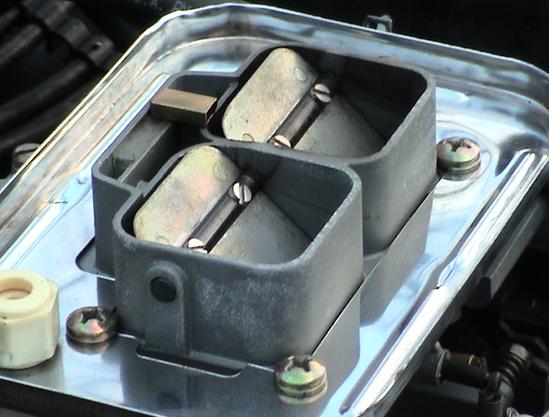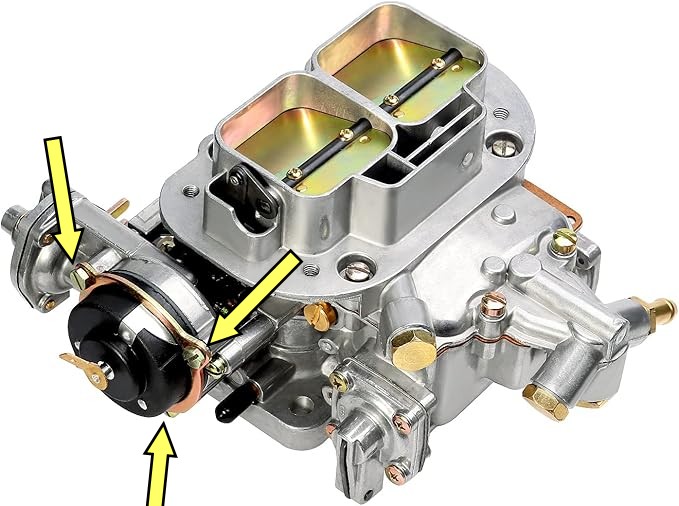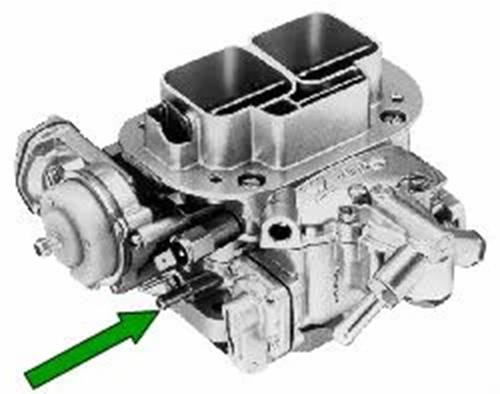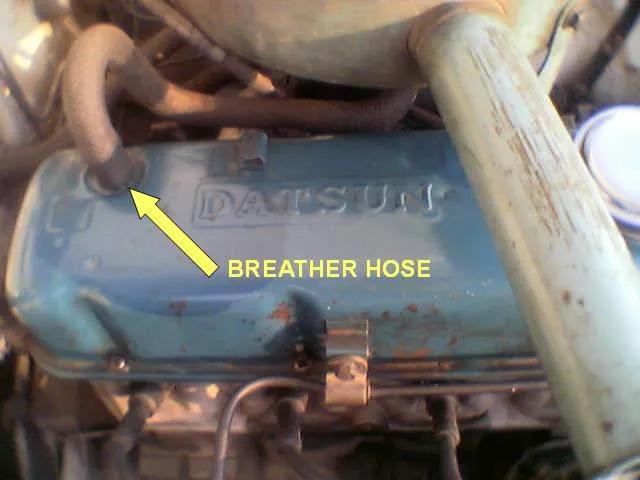<-- back to Weber 32/36 Carburetor
Adjustment settings and connections for Weber 32/36 Carburetor. For tuning the weber (tuning for air/fuel ratio), see Weber DGV Tuning.
Contents |
Adjustments
Adjustment for the Weber 32/36 is exactly like the Hitachi, same lean best-idle, same choke adjustment. They even use the same choke (you can bolt a weber choke on the hitachi and vice-versa).
Fast Idle Adjustment
Adjust Fast Idle for 1500 to 2200 RPM when engine is cold (choke fully on). For fast-idle, no adjustment is usually needed after installation. Instead, first adjust the choke itself to fully close and the fast idle should work OK.
Idle Speed and Mixture Adjustment
After installation, the idle should be adjusted.
After getting the engine warmed fully up, adjust idle speed & idle mixture according to "best lean idle" method.
Automatic Choke Adjustment
Remember to adjust the automatic choke each summer and winter as necessary for quick and easy engine starting. if the choke is like this (partially open), it needs adjusting to close all the way.
The critical adjustment is the cold engine setting: With engine fully cold, set choke tight enough to just close the choke completely when the throttle is opened slightly. Rotate it counterclockwise for more choke
CHOKE ADJUST - engine cold
- Remove air filter so you can see the choke butterflies
- Move by hand the throttle about 1/2 way
- If the choke doesn't close 100% ...
... loosen the three choke screws. Turn the choke housing anti-clockwise until the choke just barely closes 100%
Then, re-snug the screws, replace air filter, and test: a single pump of the accelerator pedal and foot off. The engine should start, idle by itself at 1,500 to 2,200 RPM. You can immediately start driving. Or if you let it idle, periodically tap the throttle to let the fast idle come down
Once engine is fully warm, remove air filter and verify that choke is 100% open.
Connections
The return line has a smaller hole than the fuel inlet line, so don't get them mixed up! Most Webers do not have provision for a return line, as the 32/36 does not need it. Keep the fuel pressure to the Weber-specified and you won't need it either. It is only used in emission-controlled versions.
The bowl vent (Charcoal Canister fitting) is only used in emission-controlled versions.
If any of the fittings are undrilled, they can be drilled out and fittings pressed in, or tapped for a screw-in fitting.
Vacuum Advance
The A12 will run fine without vacuum advance. Still for the most power at part-throttle, connect the vacuum advance hose to the carburetor port.
How to hook up the crankcase breather?
Connect the crankcase breather hose to to the air cleaner. Some 32/36 air cleaners have a round hole, a fitting can be connected there to attach the breather hose.
white fitting attaches to round hole
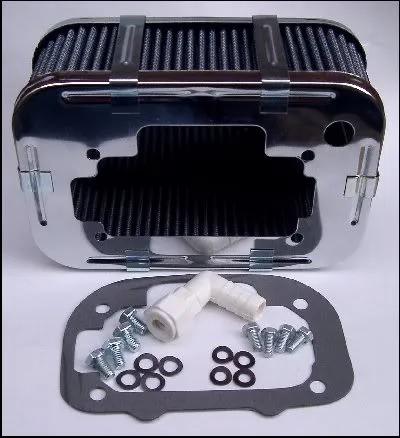
Also see: POST engine question?? in the main forum
Carburetor Tuning
Tuning is a Must
If you buy a kit for your specific engine, it will run fairly good out of the box, but should still be tuned to match your engine. If you obtain one second-hand, count on swapping jets, emulsions tube and other tuning parts to make your engine run right. Black smoke, smelly exhaust, jerky acceleration and poor fuel economy is what you get before you tune it. It may "feel powerful", but you can make it run even better with some patience and the right parts.
* Tuning * Jetting * Adjustments

![[Datsun 1200 encyclopedia]](/wiki/upload/wiki.png)



